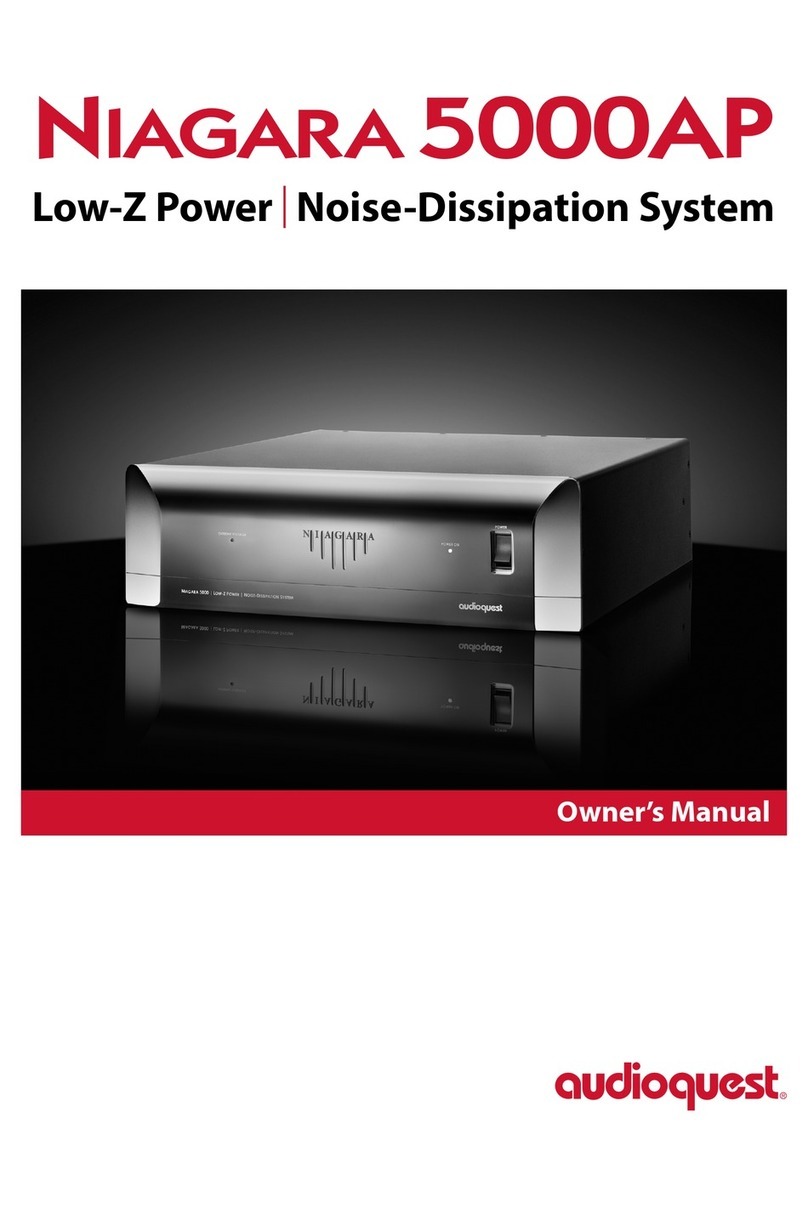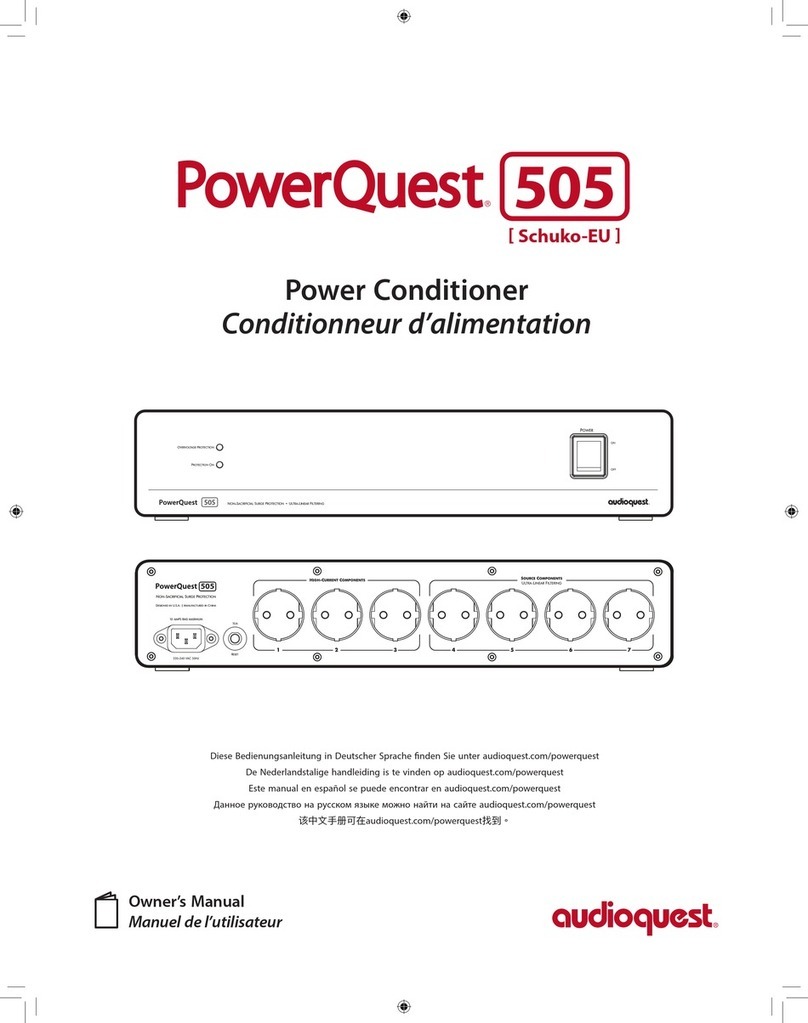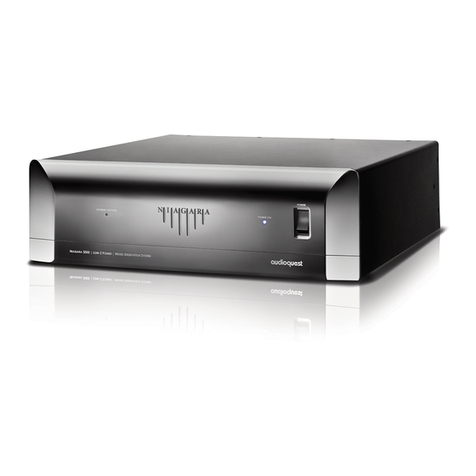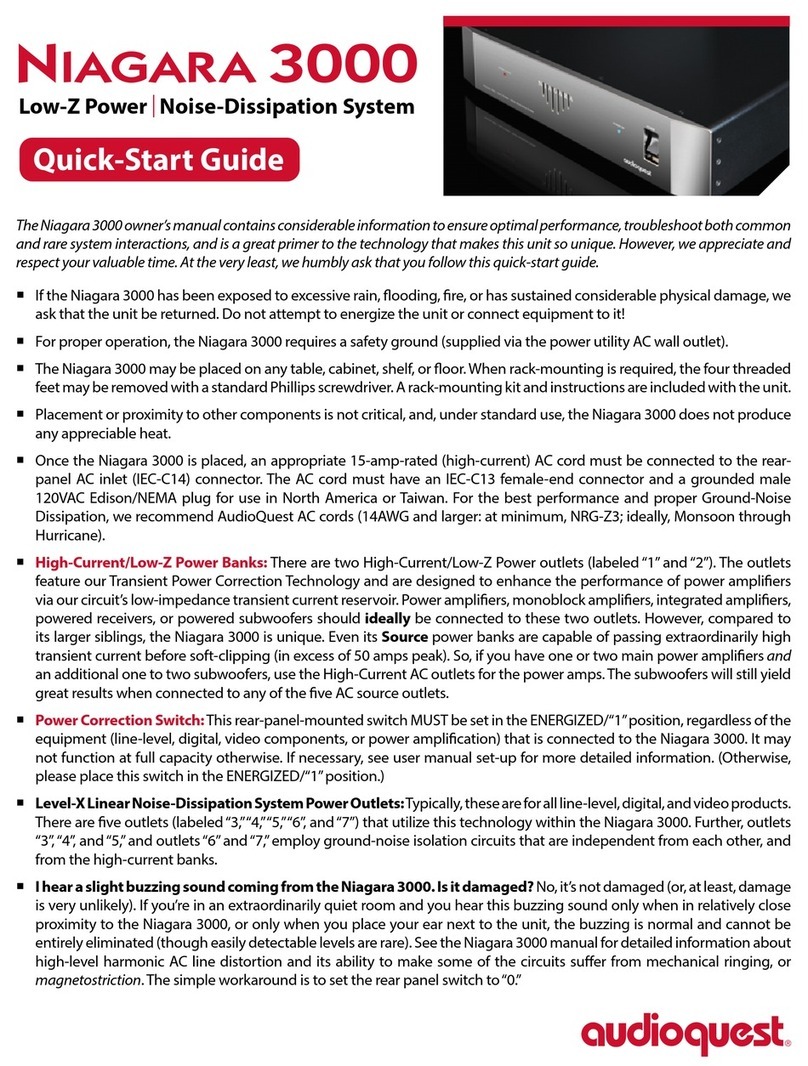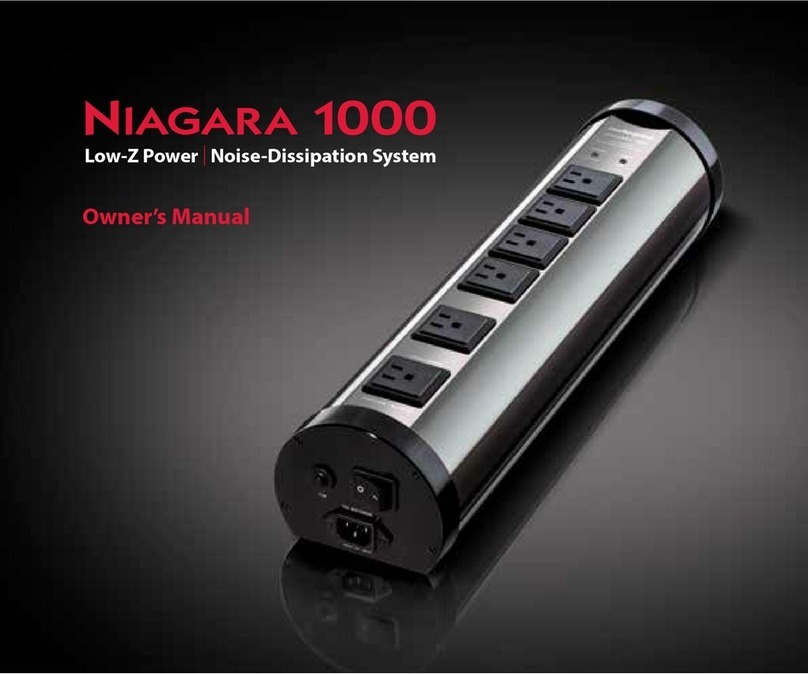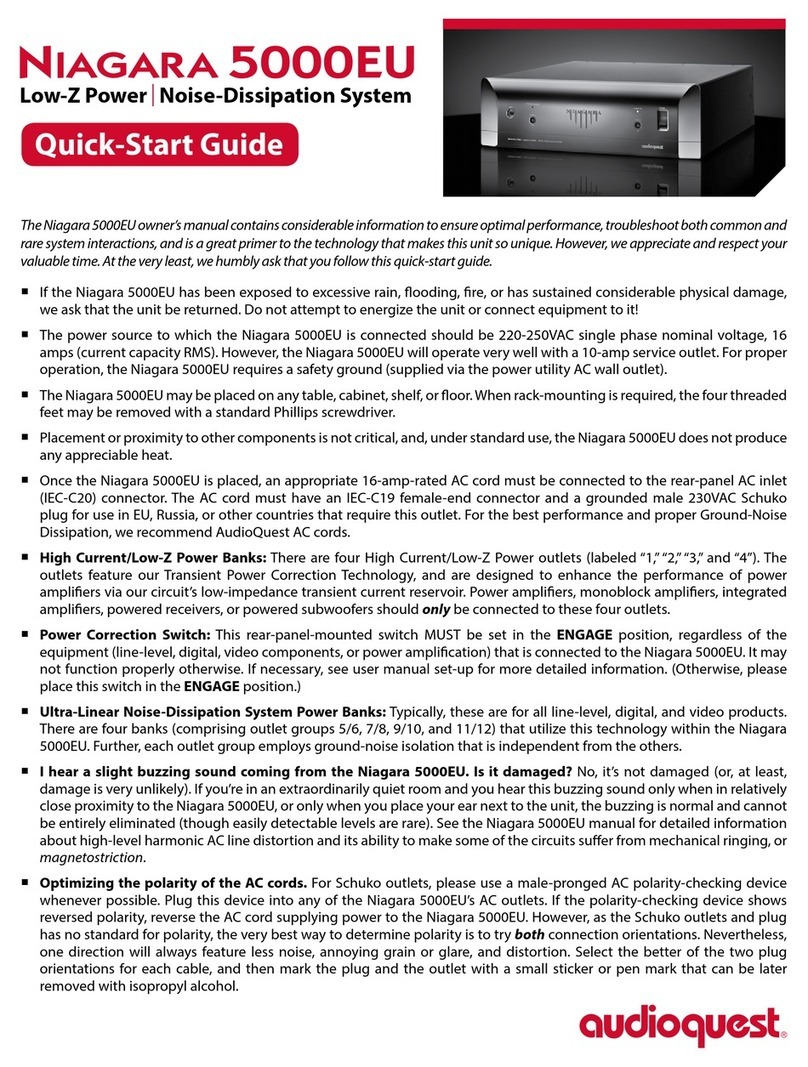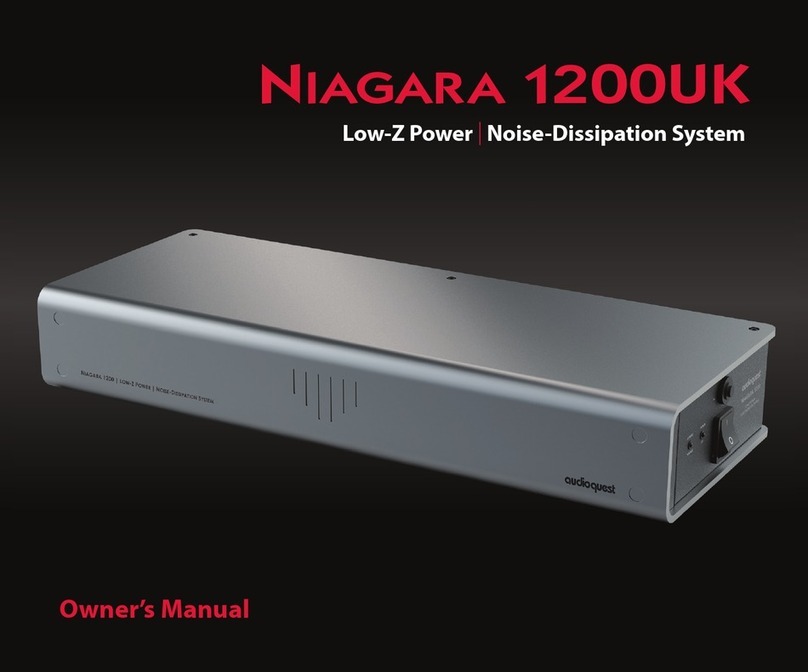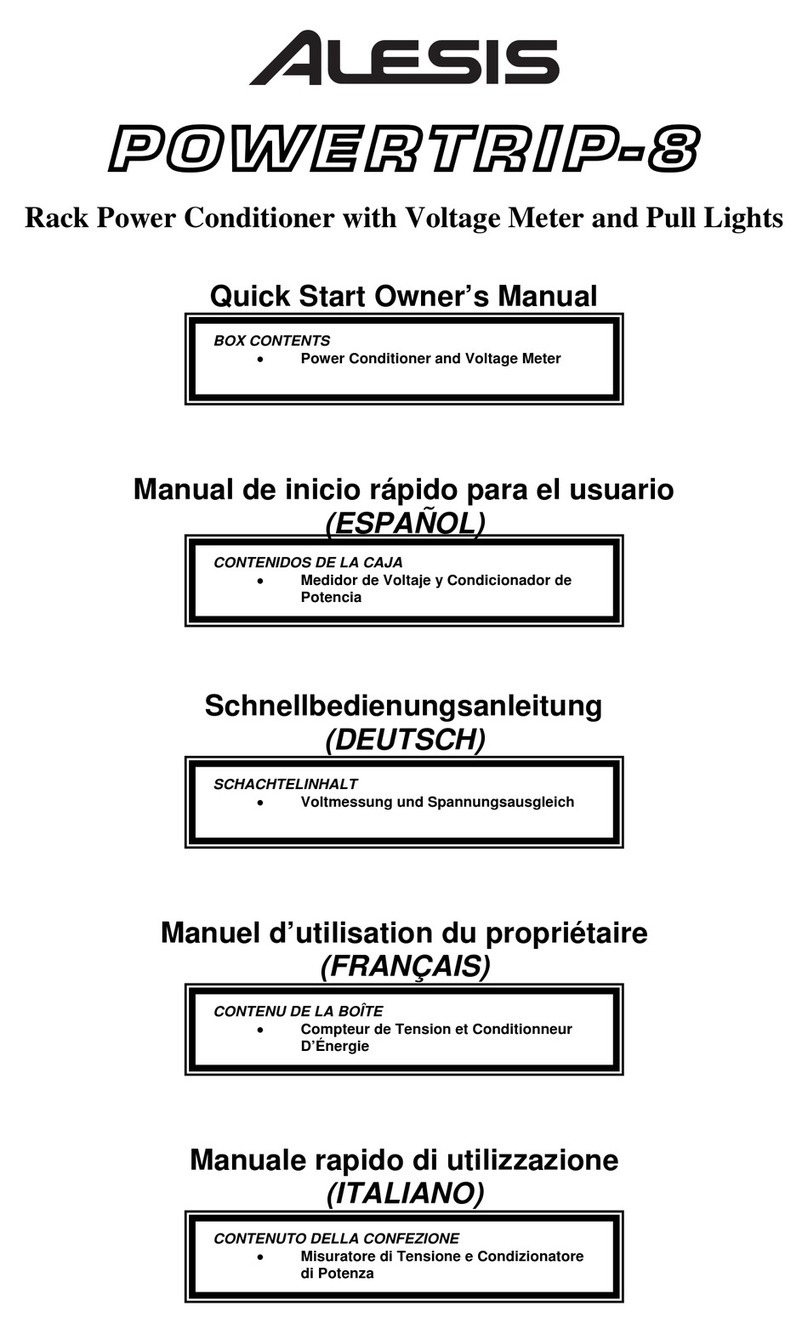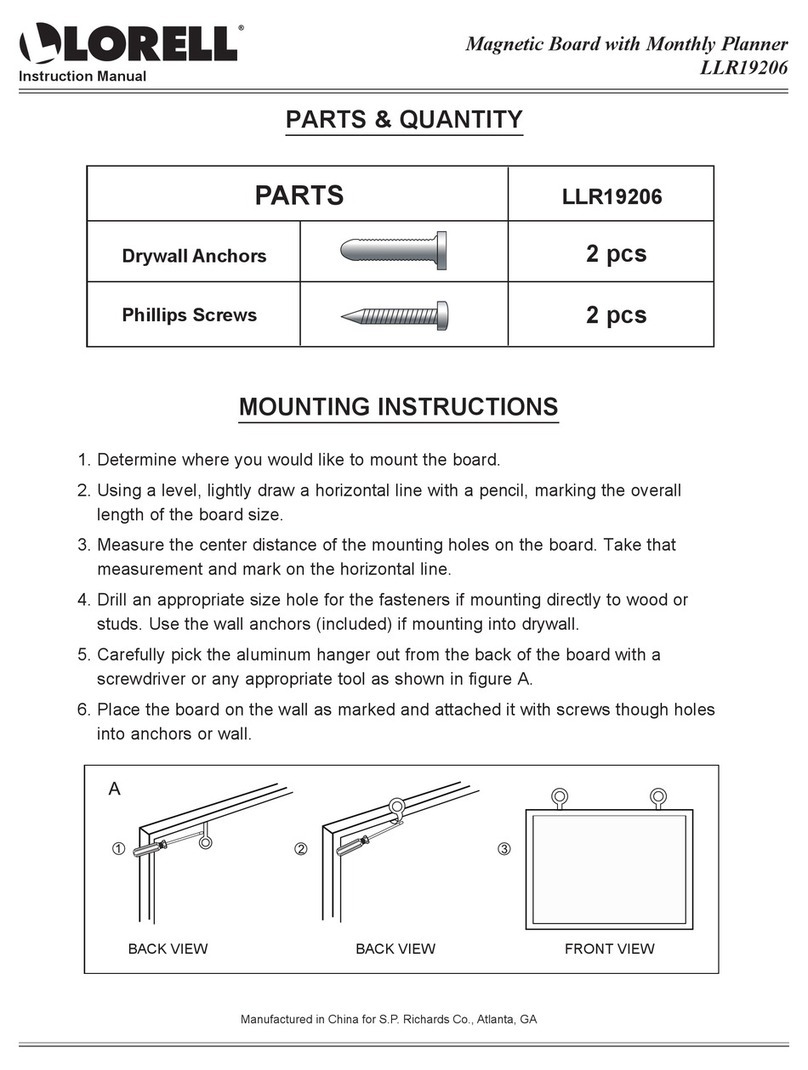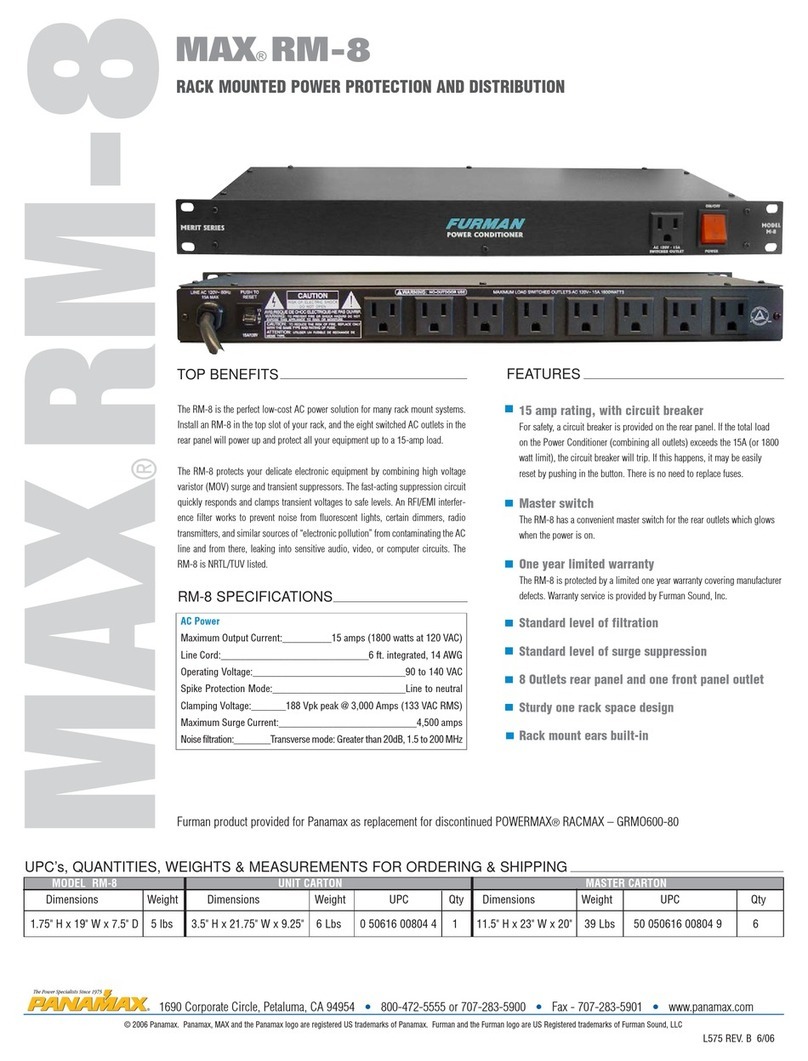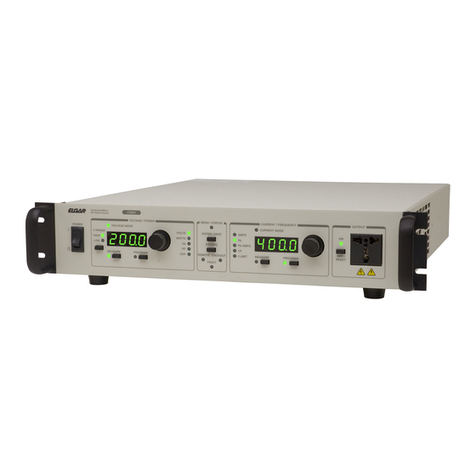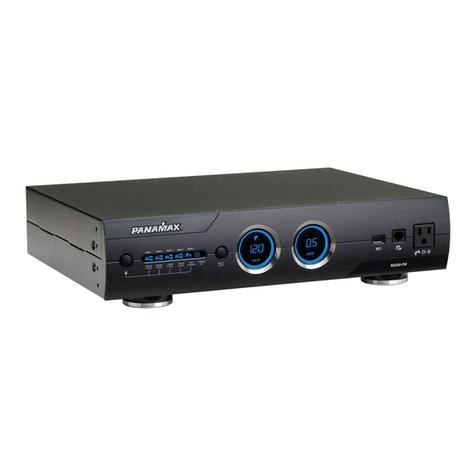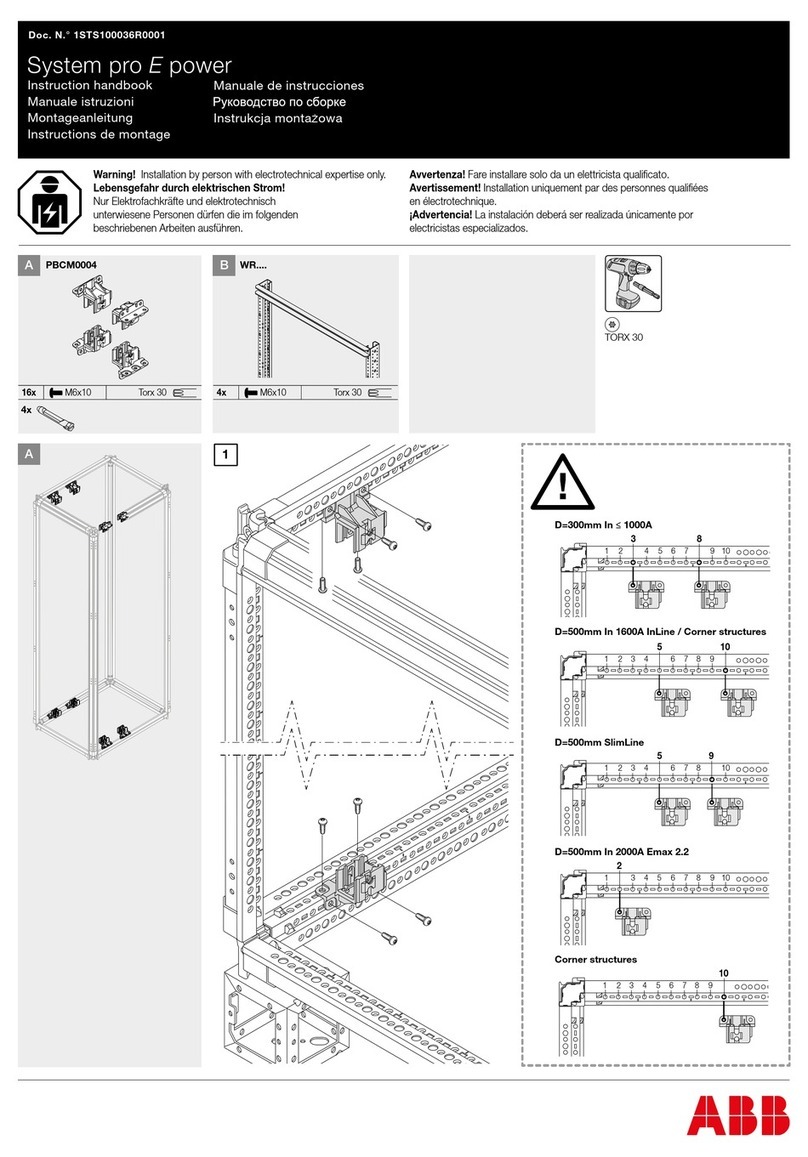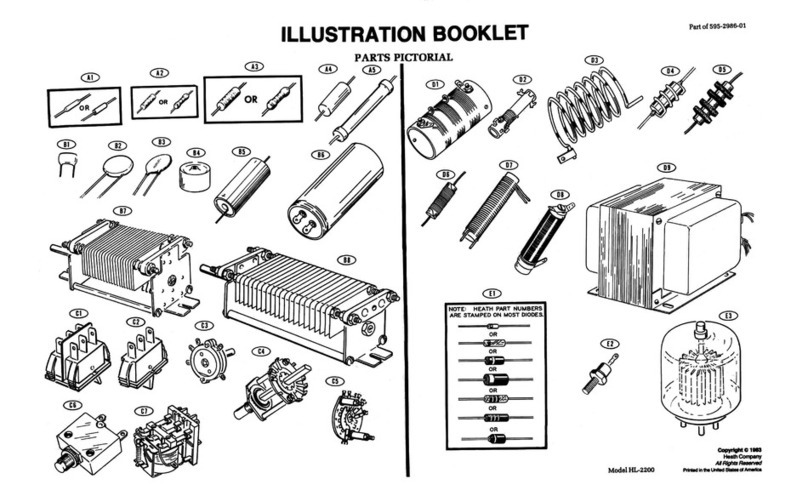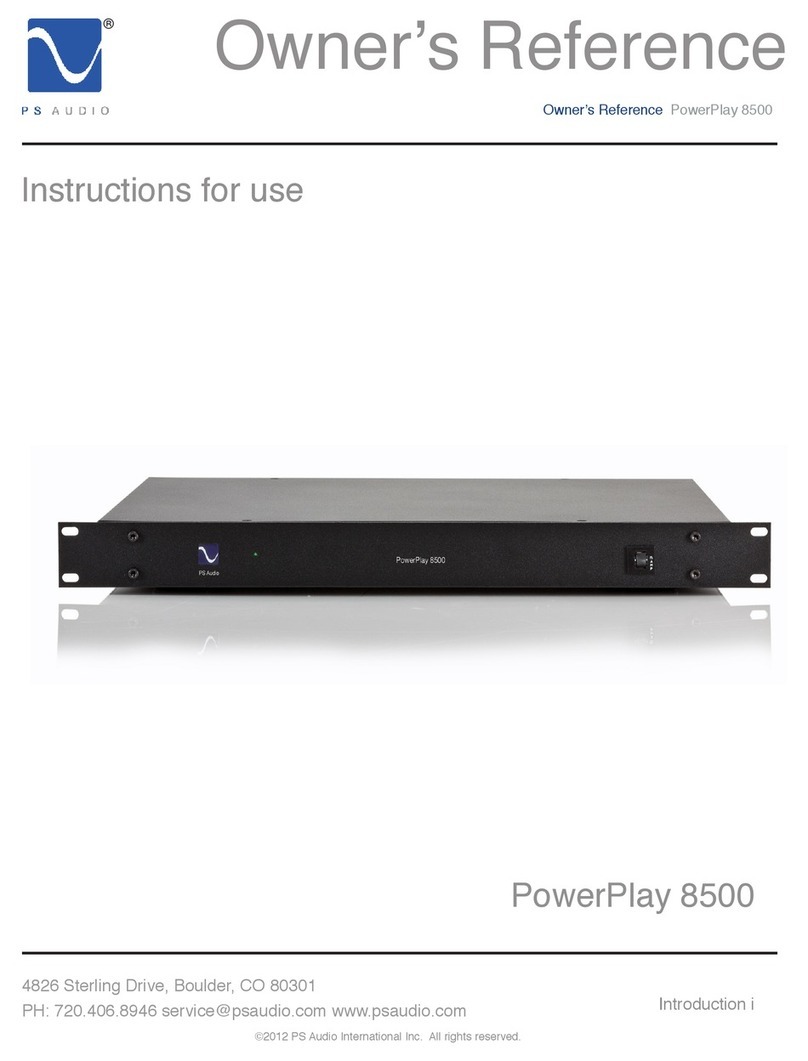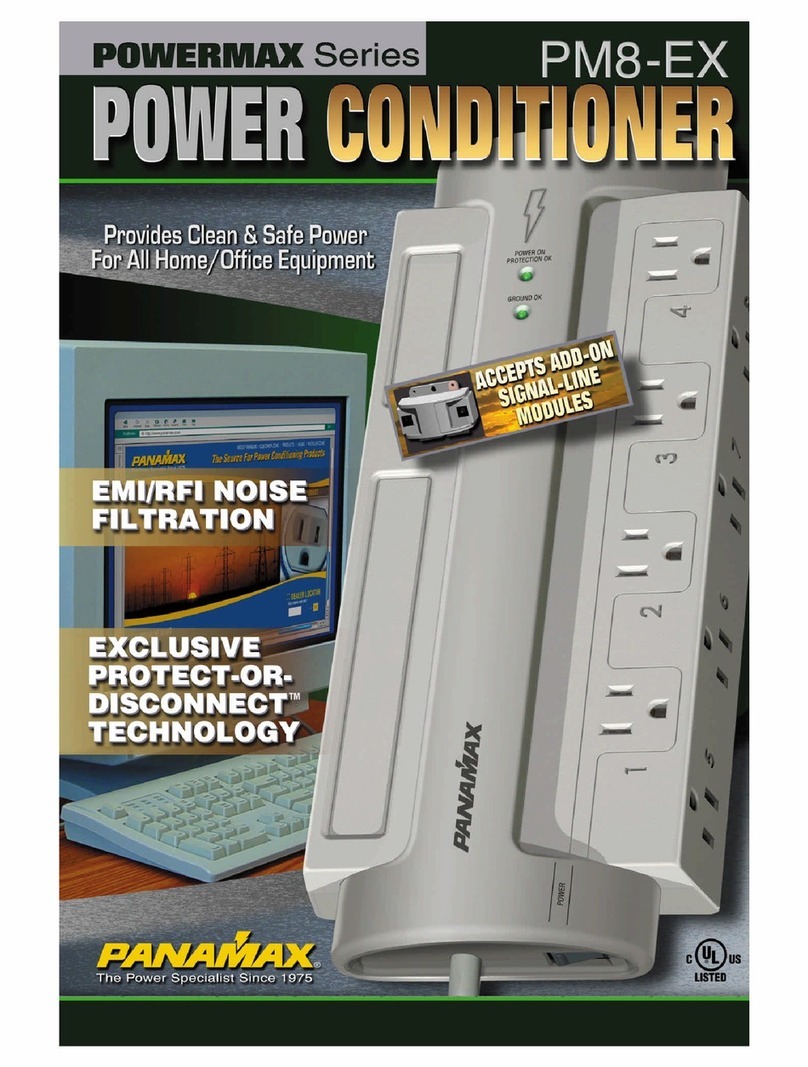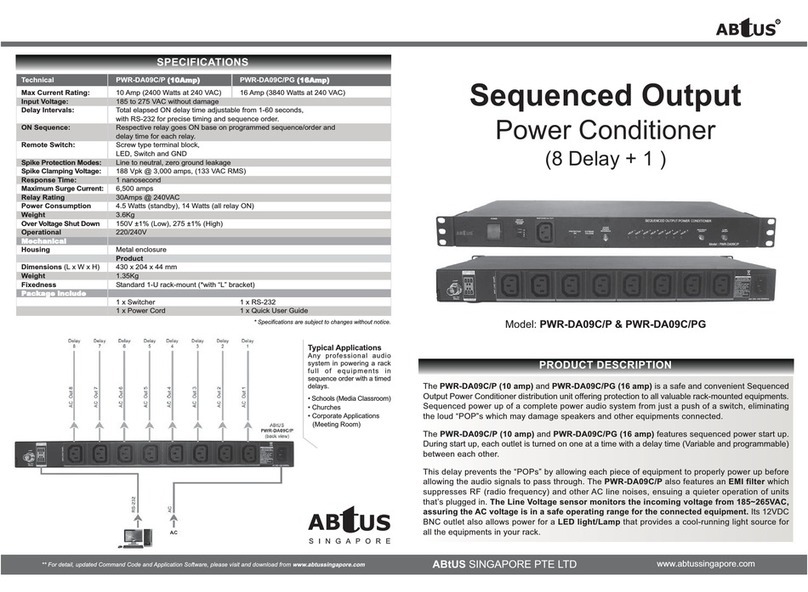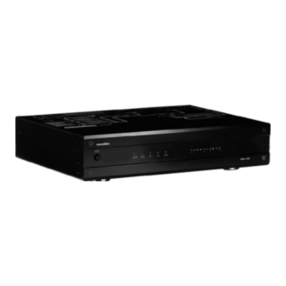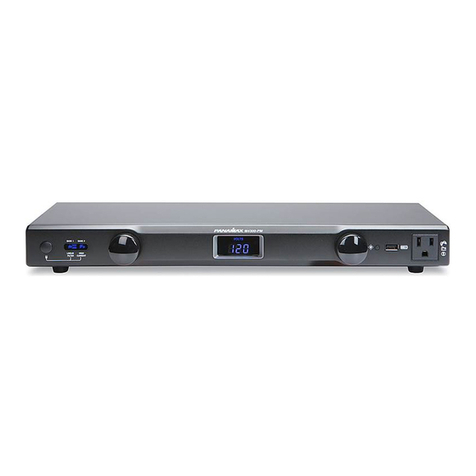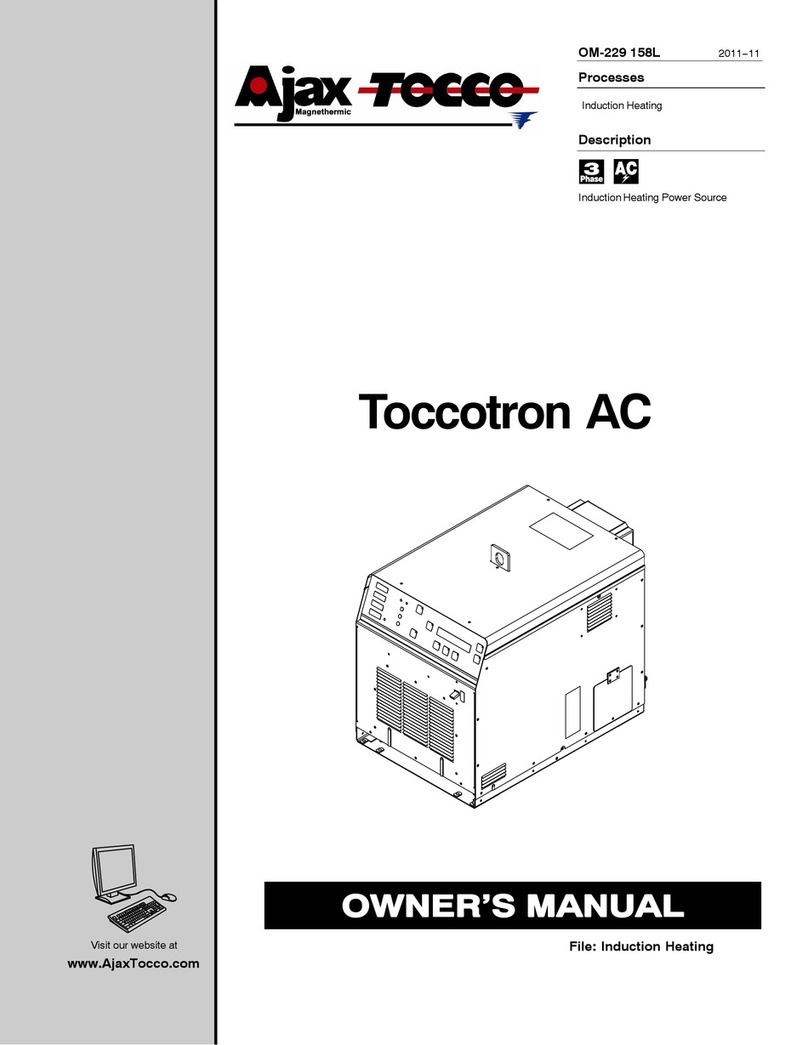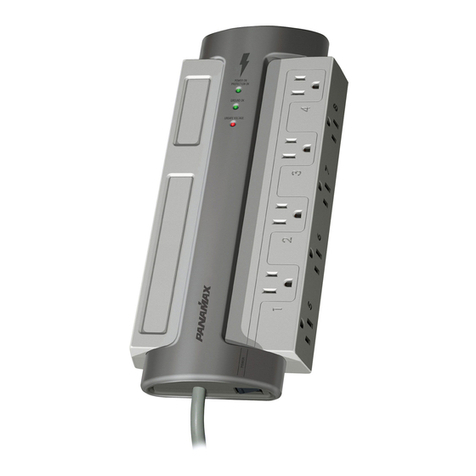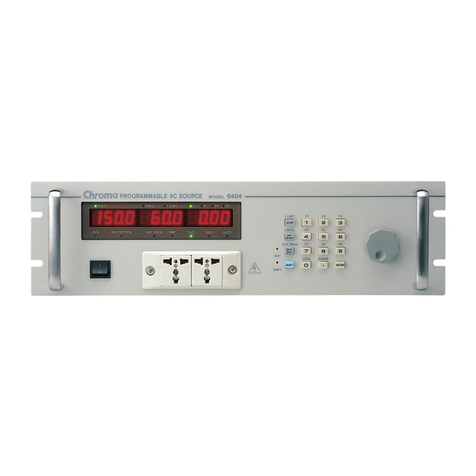
3
For AudioQuest, honoring the source is never a matter of simply using premium
“audiophile-grade parts” or relying on a proprietary technology—common
approaches used within the audiophile market. For years, we have all been witness
to the same, seemingly endless audiophile debates: Valves versus transistors. Analog
versus digital. Can cables really make a dierence? The debates go on and on. While
we, too, can brag about our many unique technologies, we realize that true audio/
video optimization is never a matter of any one secret or exotic circuit. When it
comes to noise dissipation for AC power, many approaches can yield meaningful
results. However, they may also impart ringing, current compression, and non-linear
distortions that are worse than the disease. The Niagara 1200EU uses our patented
AC Ground Noise-Dissipation System, coupled to a sophisticated, directionally
optimized, wide bandwidth-linearized noise-dissipation circuit.
Though it’s easy to boast, it’s quite another thing to create a solution that is consistent,
holistic, functional, and that honors veriable science. It’s not enough to reduce AC
line noise and its associated distortions at just one octave, thus leaving vulnerable
the adjacent octaves and octave partials to noise, resonant peaking, or insucient
noise reduction. Consistency is key. We should never accept superior resolution in one
octave, only to suer from masking eects a half-octave away and ringing artifacts
two octaves from there. This is the principal criterion for AudioQuest’s Low-Z Power
Noise-Dissipation System.
The Niagara 1200EU represents over 20 years of exhaustive research and proven AC
power products designed for audiophiles, broadcast engineers, and professional
audio applications. Every conceivable detail has been addressed: In the Niagara
1200EU, you’ll nd optimized radio-frequency lead directionality; run-in capacitor
